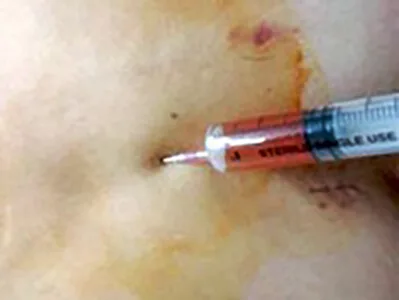腹部除皱后的血清肿:它是什么以及如何管理
腹部除皱术(腹部整形术)是一种变革性的手术,可以显着改善身体轮廓并增强自信心。
通过去除多余的皮肤和脂肪,同时收紧腹部肌肉,这种手术可以帮助患者获得更紧致、更塑形的腹部。
然而,与任何重大外科手术一样,恢复过程可能涉及轻微并发症。
最常见的术后事件之一是 血清肿,这是一种可能在手术区域形成的临时液体积聚。
虽然这是一个常见且可控的问题,但了解血清肿以及如何正确处理它有助于确保顺利恢复。

什么是血清肿?
手术后,作为愈合过程的一部分,身体会自然地用液体填充空隙。
当这种液体聚集在组织之间而不是被吸收时,就会发生 血清肿 。
在大多数情况下,它并不危险,只要适当小心即可消退。
然而,如果不加以管理,过多的液体积聚会干扰愈合并引起不适。
为什么腹部除皱后会出现血清肿?
Seroma can form after a tummy tuck due to several factors:
- Lymphatic Flow Disruption: The lymphatic system, which helps drain excess fluid, is temporarily interrupted by the abdominal incision, leading to fluid buildup.
- Tissue Separation: Since a tummy tuck involves lifting and repositioning skin and fat, spaces are created where fluid can accumulate.
- Activity Level: Too much movement—or prolonged sitting—during the first 3-4 weeks after surgery can contribute to seroma formation.
- Lack of Compression: Compression garments help minimize space between tissues, reducing the likelihood of fluid accumulation.
Francis Jeon 博士的见解
Francis Jeon 医生强调了 手术后尽量减少体内不必要的空隙 的重要性。
当空间被留下时,身体自然会用液体填充它们。
适当按压并遵循术后护理说明 可显著降低血清肿形成的风险。
另一个关键考虑因素是排水管管理。 将引流管放置太久会增加感染风险,而过早移除引流管会导致液体积聚。
Jeon 医生喜欢尽快移除引流管,同时仔细监测血清肿。
如果发生积液, 针吸(通过注射器清除液体) 是一种简单有效的管理方法。

如何预防血清肿?
为了降低血清肿的风险,请遵循以下指南:
- 穿紧身衣:这有助于将组织固定在适当的位置,减少液体聚集的空间。
- 平衡活动和休息:避免过度运动,但也不要长时间久坐。轻柔的步行可促进血液循环并减少液体积聚。
- 遵循引流管保养说明: 正确管理引流管对于防止液体积聚至关重要。
- 补水和饮食:保持良好的水分和均衡的饮食有助于组织愈合并减少肿胀。
如何管理血清肿?
如果在采取预防措施后仍出现血清肿,以下是管理方法:
- 小血清肿通常会自然消退:如果液体积聚轻微且不会引起不适,身体可能会随着时间的推移逐渐吸收它。
- 针吸:如果血清肿持续存在或变得不舒服,医生可以用注射器去除液体以缓解压力和不适。
- 监测泄漏:如果过多的液体通过切口找到出口,它会减慢愈合速度。保持该区域清洁干燥对于预防感染至关重要。
- 必要时就医:如果血清肿变大、疼痛或出现感染迹象(如发红、发热或脓液),则需要医疗干预。

最后的思考

Seroma is a manageable condition after a tummy tuck, and most cases resolve without complications.
For at least the first month, wearing a compression garment 24 hours a day, limiting physical activity, and following drain care instructions can significantly reduce the risk.
Dr. Jeon reassures patients that seroma is a normal part of recovery and can be treated easily.
With proper care, healing can progress smoothly and uneventfully.
In particular, during long periods of sitting or when flying where cabin pressure decreases, additional firm compression with an abdominal binder along with the garment is recommended to further reduce the risk.
If you experience any signs of seroma, don’t hesitate to reach out to the Evita Clinic medical team.
Our specialists are here to monitor your progress and provide expert care to ensure a seamless recovery.

Leave A Comment
You must be logged in to post a comment.